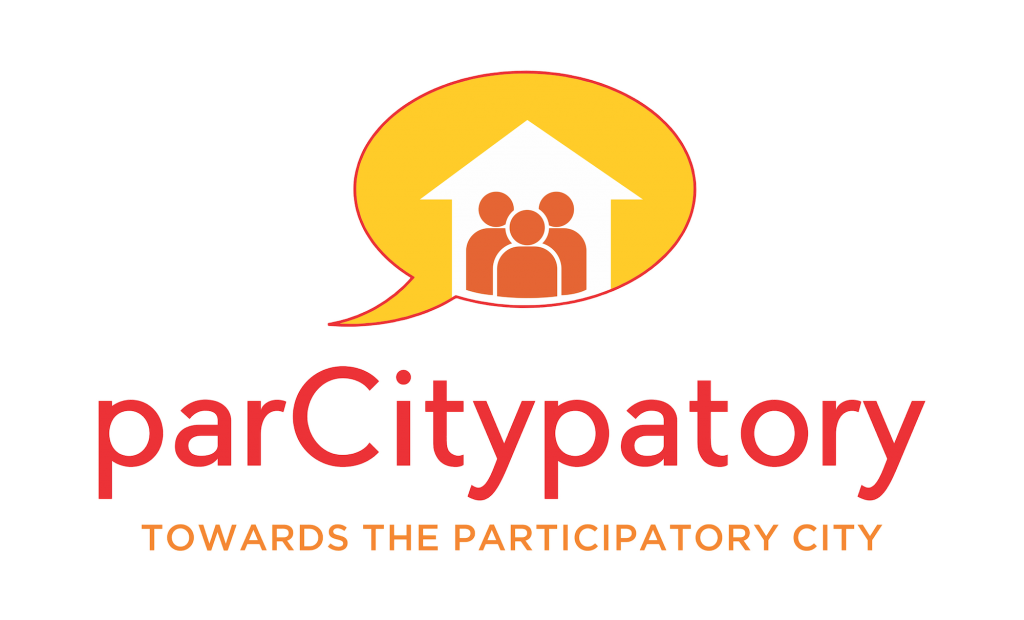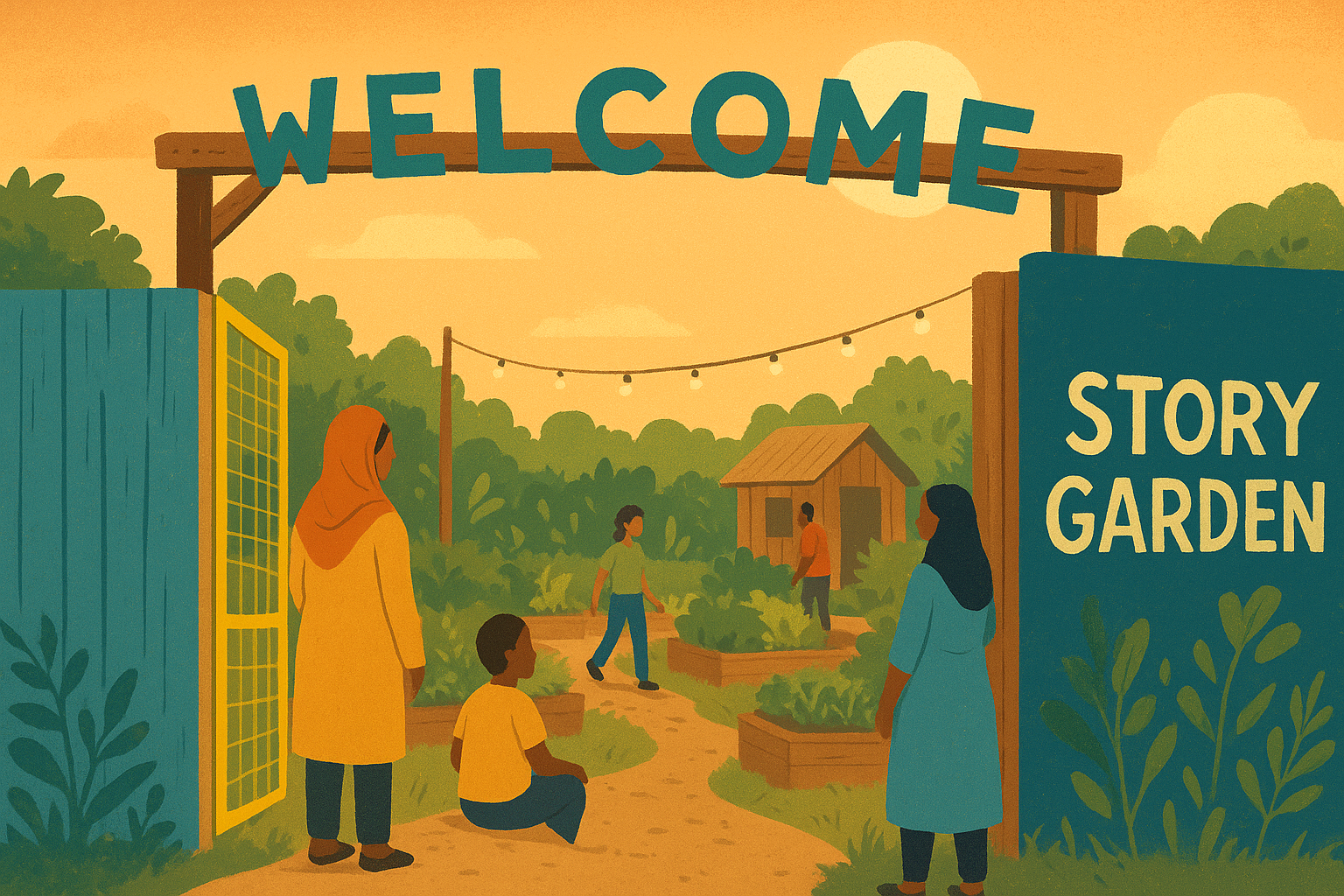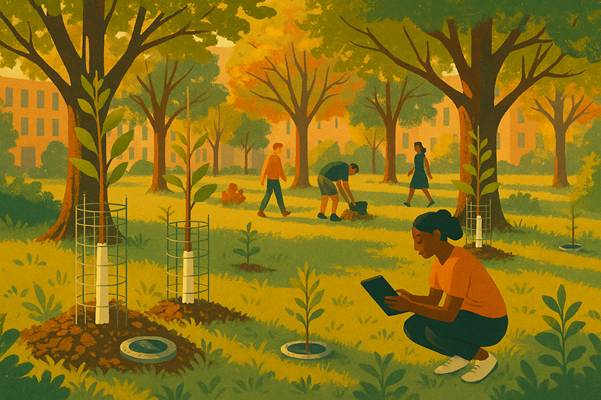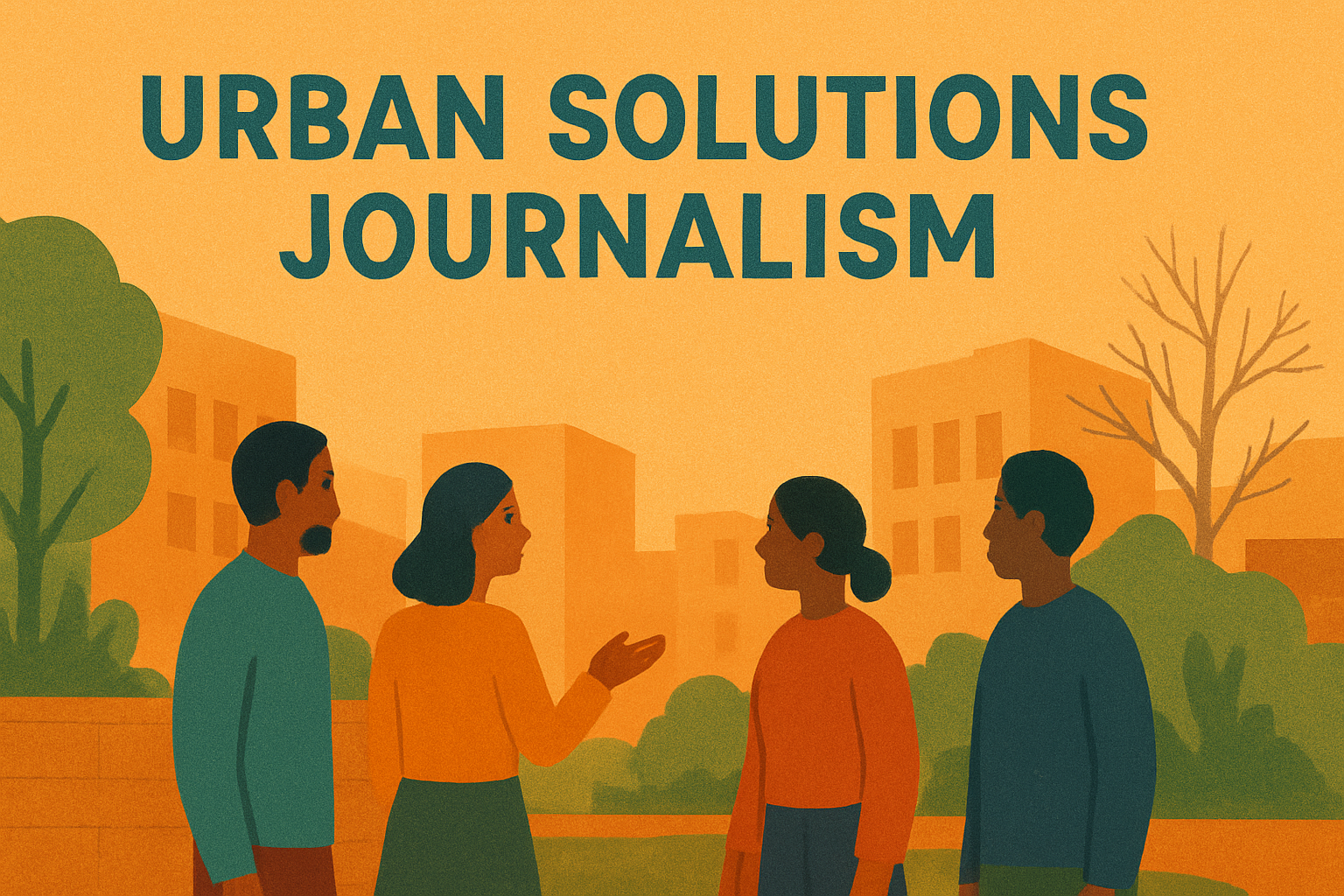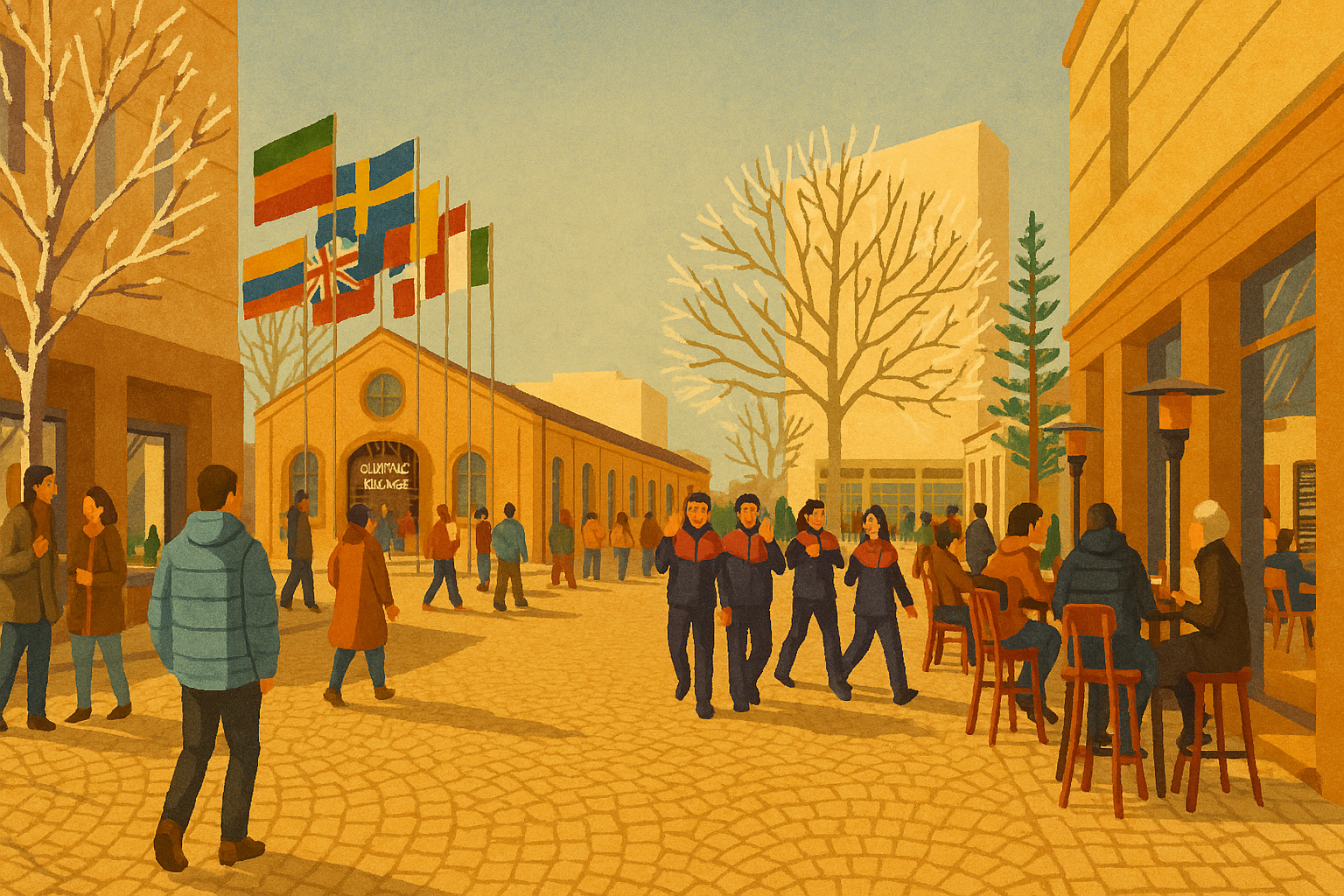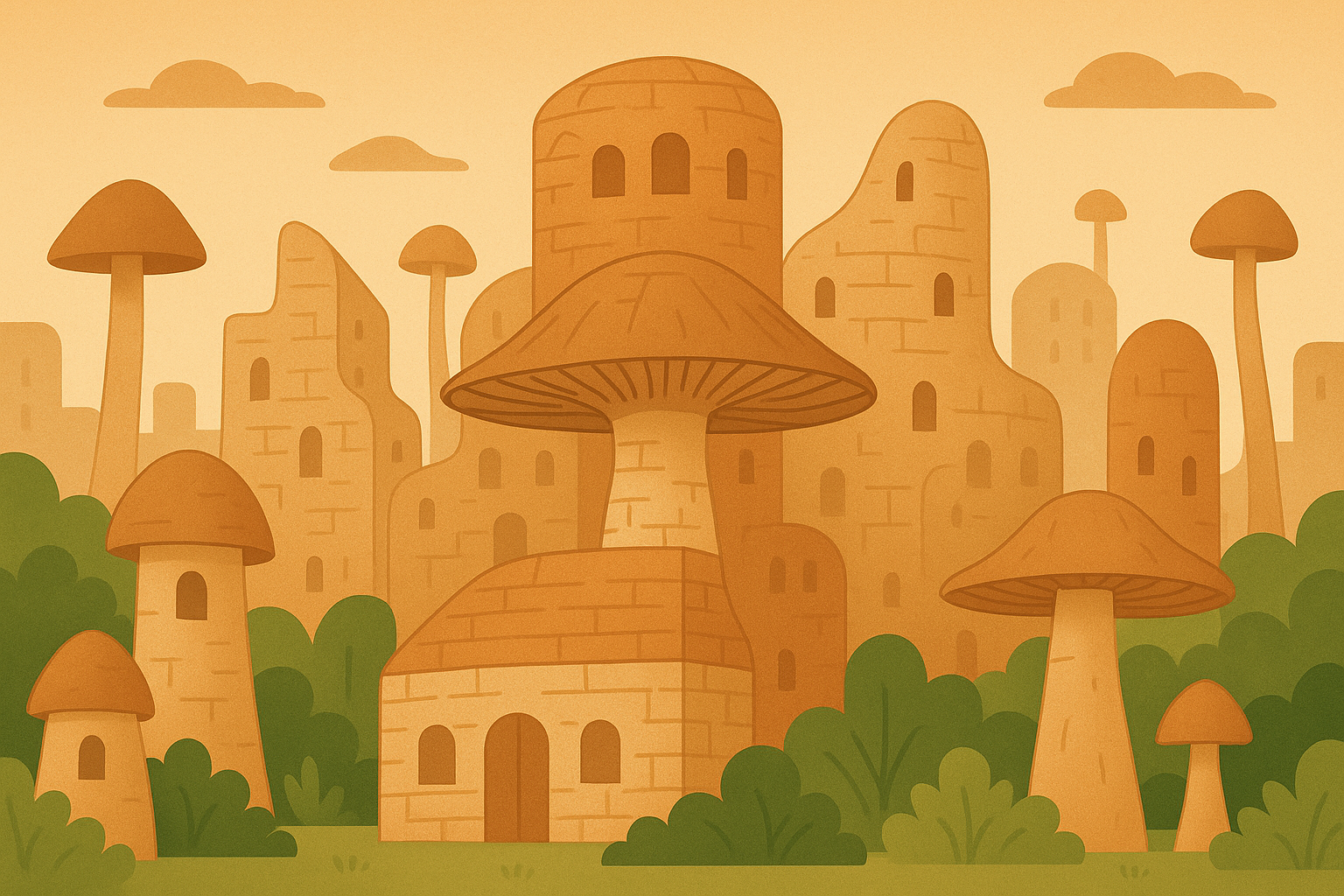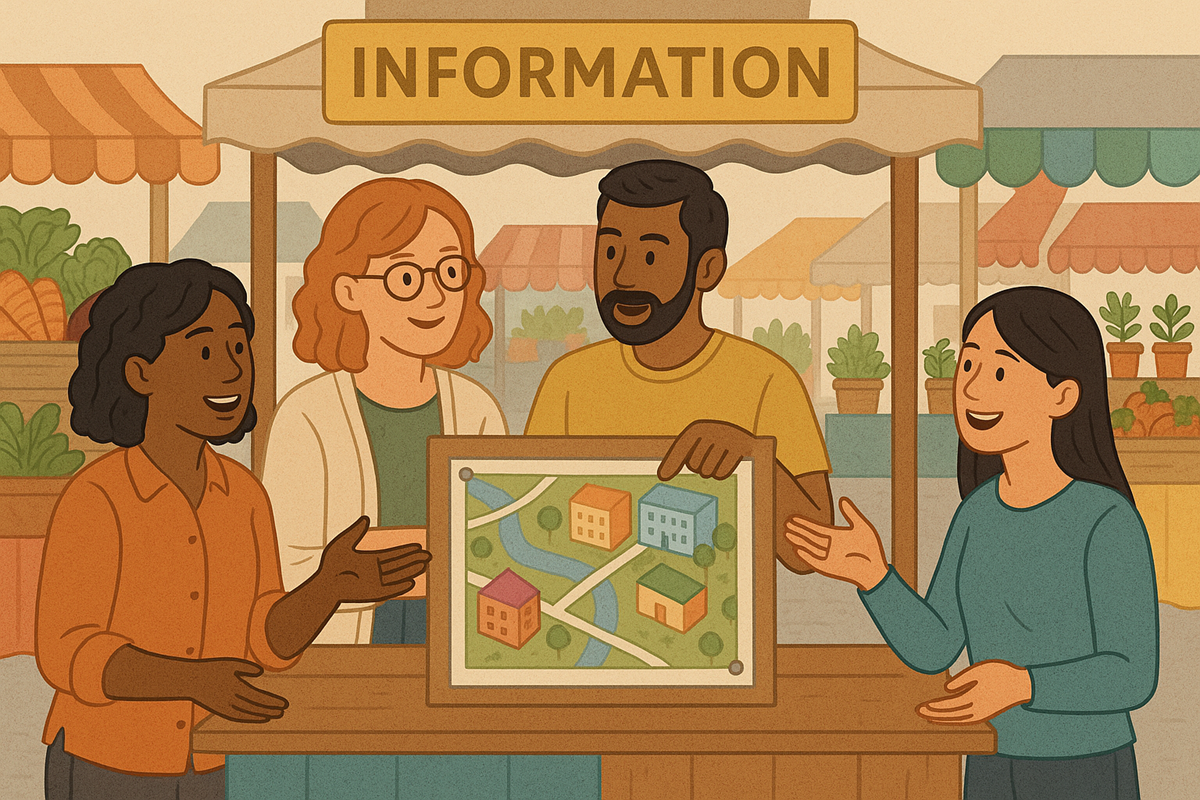Behind the British Library in London, a former car park has become the Story Garden, a community hub flourishing while the site awaits redevelopment. Hidden from the rush of commuters and tourists between King’s Cross and St Pancras, Somers Town residents happily enjoy their tranquil garden. The welcome sign reads:
“Because everything here is temporary and built on concrete, we use raised beds and moveable structures that can be relocated in Somers Town and beyond when we move on. We also use reclaimed materials, like scaffold boards, skips and fallen trees.”
Run by Global Generation, an educational charity working with local children and young families, residents and businesses in neighbouring boroughs, the goal of projects like this garden is to create healthy, integrated, and environmentally responsible environments. The Story Garden hosts many diverse events including one-off workshops and courses on horticulture, construction, art and design, and volunteering opportunities. Food grown here supports the local food bank as well as residents, who can cultivate and harvest from their own plots.
Since 2018, the Story Garden emerged on its current site, named through a community process to reflect the many stories that get shared and created in the garden. The site’s temporary nature is visible not only in the plants, but also in the modular classroom and meeting spaces. The different voices of local residents, many of them from Bangladesh and Somalia, are everywhere, including in the signposts and the selected plants.
“I can hear the chirping of urban birds over the metallic hum of the overground, heralding the arrival of spring. It feels like a special place, an oasis of hope in a concrete desert. A waste dumping ground, reborn as a garden, a place where plants and children grow together.”
Young person from King’s Cross
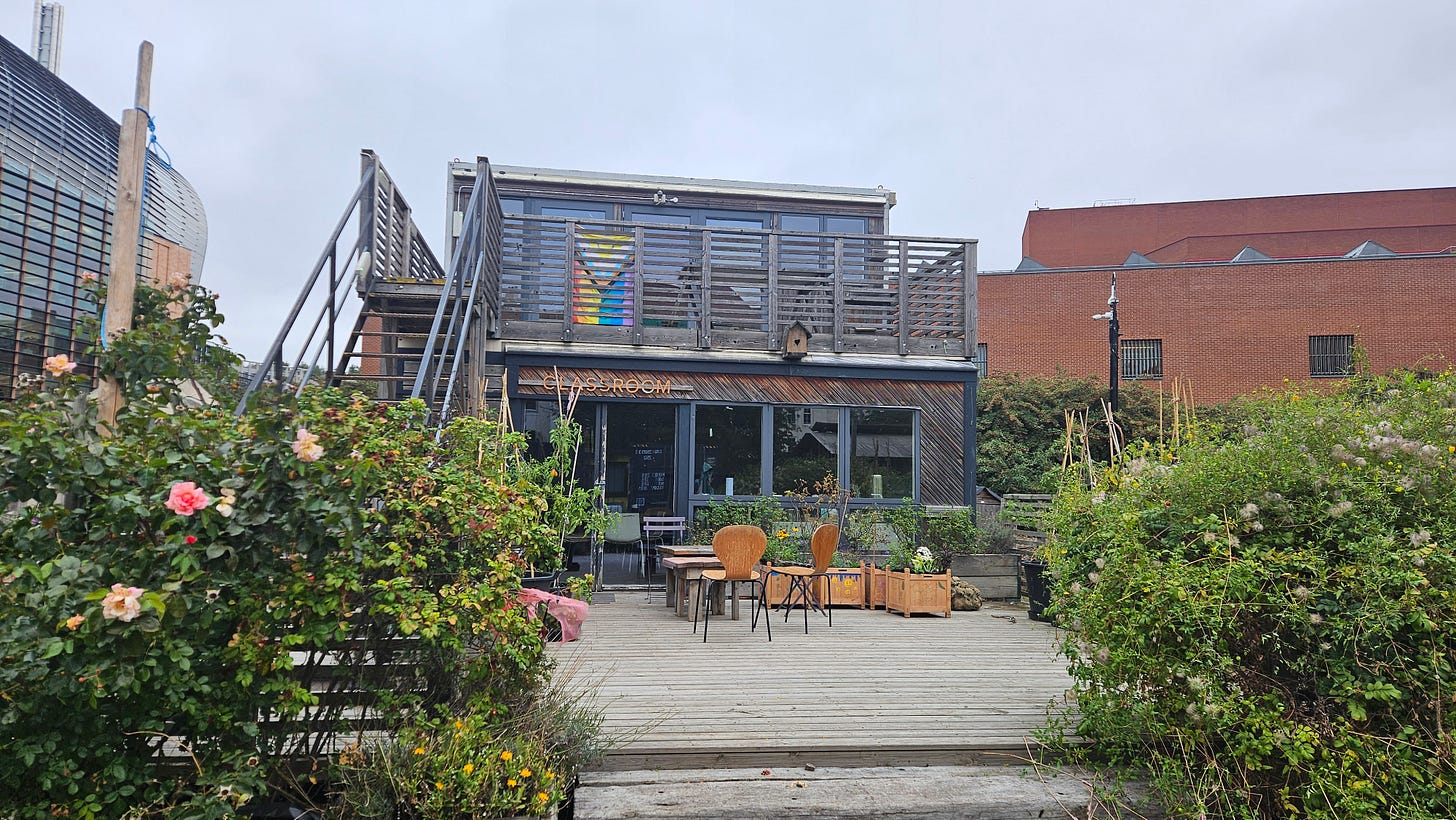
What temporary spaces can do
Some version of the Story Garden has been around for 16 years, starting with a moveable vegetable garden built in skips. The “garden of a thousand hands” has moved around King’s Cross several times, growing in scope and scale – always with the mission of connecting people to nature. Originally intended as a three-year project, the lease was extended. Now, it is time to move. The new forever home of the garden will be on York Way, not far from the current site.
During its stay behind the British Library, the Story Garden has offered a green oasis with an orchard, a small oak forest, raised flower beds, and different meeting spaces, to thousands of residents. Workshops, group meals cooked together, youth programmes and Family Saturdays all speak to the success of the programme. In addition, MAKE @ Story Garden has brought local people together with students and staff from Central Saint Martins in creative, collaborative workshops, including clothes-making and climate skills.
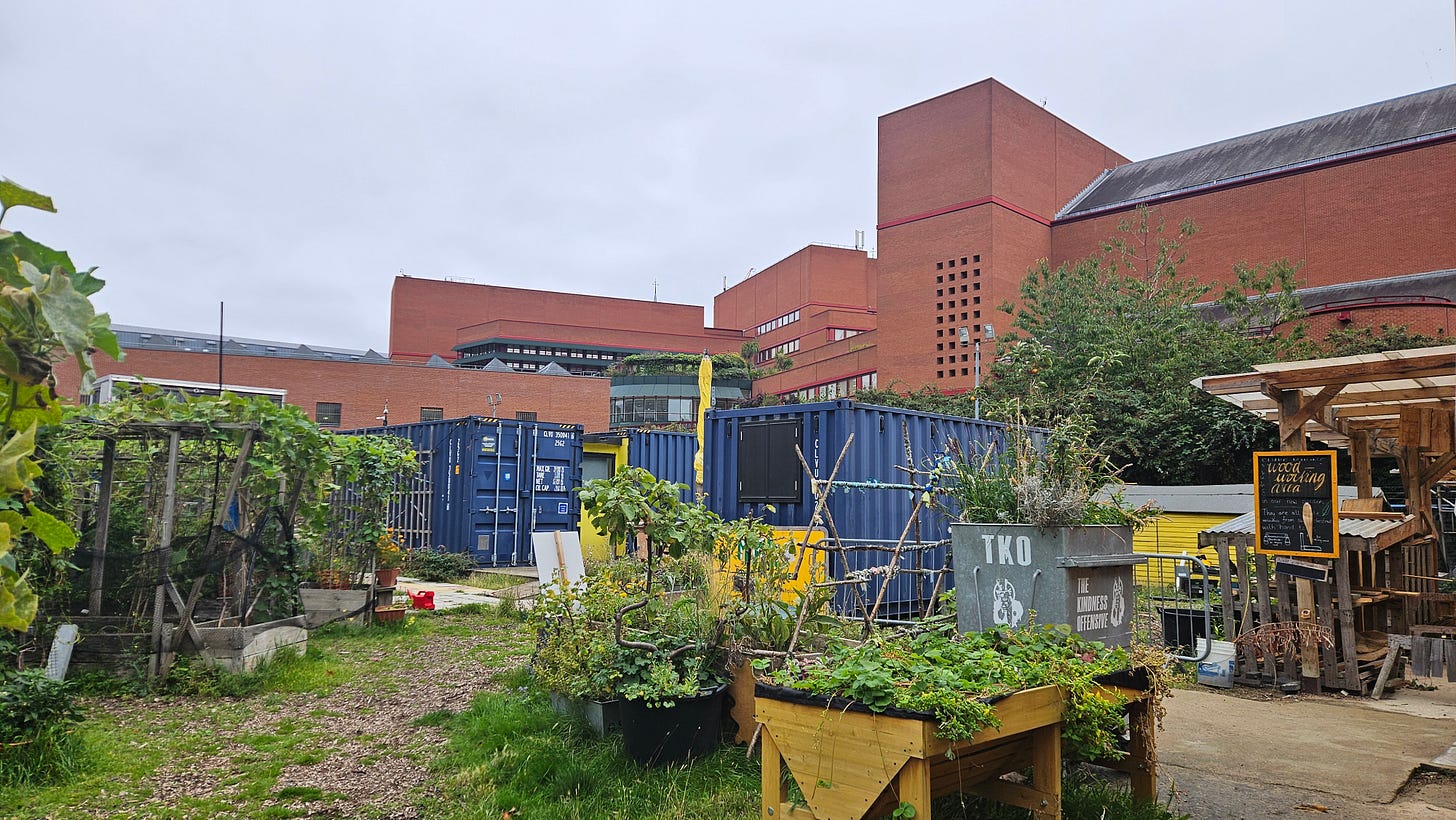
The benefits of urban community gardens include boosts for local economies, increased civic engagement, and better wellbeing of residents. The Story Garden has certainly achieved this: Its abundant greenery has offered access to greenery for Somers Town residents, many of whom live in old social housing blocks without gardens or communal space.
Similar temporary projects around the world show what else can happen on vacant land: In India, projects in Warangal and Pimpri Chinchwad are transforming waste land and underused stretches into parks and play spaces, serving densely built communities with little green space. In Paris, Les Grand Voisins illustrated how a large vacant institutional site can be activated with mixed‐uses long before redevelopment begins.
Lessons from meanwhile sites
Despite their promise, meanwhile sites face significant challenges. Their necessary temporariness can weaken community trust. Residents and groups often invest time, energy, and emotion into shaping these spaces, only to see them dismantled when development begins. For gardens, cultural organisations, or local services, the sudden loss can feel like more than just a logistical change: it can erode the social bonds that had been carefully cultivated.
Meanwhile sites can also become entangled in wider debates about urban change. While they inject vitality into high streets or derelict lots, they risk being co-opted as symbols of “revitalisation” that mask longer-term displacement or gentrification. Without long-term guarantees, there is a danger that they serve developers’ interests more than communities’, offering a pleasant moment in time, but little real power over what follows.
This is a challenging problem to solve. But at the same time, meanwhile sites fill an important gap in the urban fabric. For a few years, they provide a meeting point, a garden, or other uses — from artist studios to pop-up shops and community kitchens. They actively reclaim brownfield sites and speak to the idea of using all spaces in cities. The Story Garden shows a way of re-inserting the natural world on top of a paved lot.
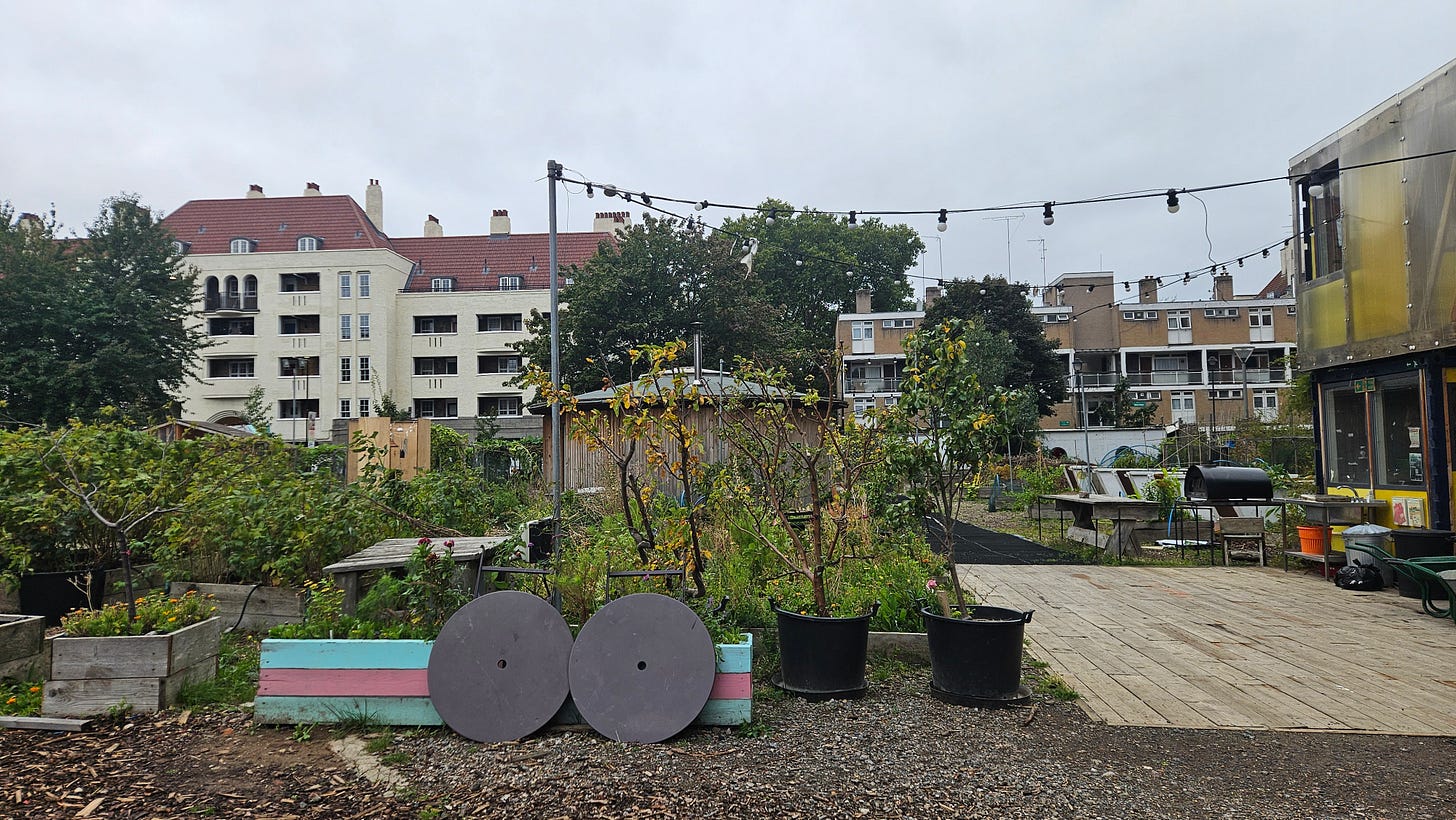
Growing community
The British Library plans to extend its site from 2026 to 2032. Unfortunately, key benefits of the garden such as providing food security might get lost – although on its website, the Library promises to include a green space:
“The Story Garden is a direct response to the community’s wish for more green space – feedback that we’ve taken forward into our plans for the extension. So while the existing Story Garden will move at the end of September 2025 to enable construction to start in 2026, we plan to create new green spaces, including a community garden where we’ll continue to grow not only plants and produce but our connections and relationships with local people too.”
While the Story Garden will have a permanent home at the Triangle Site, other meanwhile sites are not that lucky. Yet even in their short lives, they remain resourceful and often wonderful places, including community orchards, gardens, shops and workshops for local artists, or classrooms – showing how cities can make use of empty lots and explore their identity.
Is there a meanwhile site in your city? Share in the comments!
